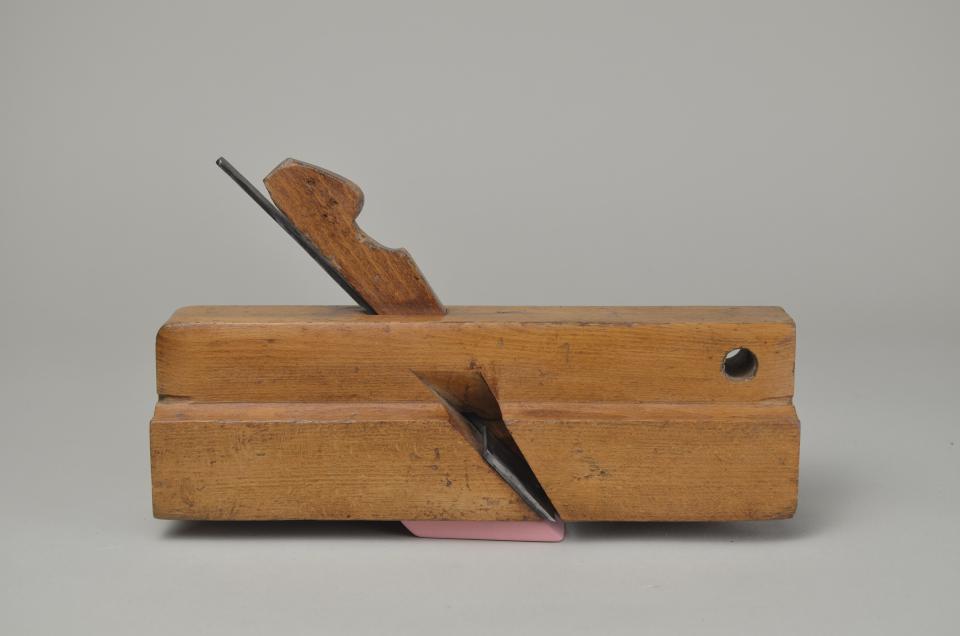
L: 23.9cm W: 5.2cm H: 14.5cm
a- L: 23.9cm W: 5.2cm H: 7.8cm
b- L: 7.2cm W: 2.7cm H: 1.3cm
c- L: 18.1cm W: 4.3cm H: 0.3cm
A wooden sash molding plane consisting of 3 parts.
a- The body is rectangular and made of a light brown hardwood. A cheek protrudes from the bottom half of the front body. The throat cuts diagonally through the middle of the body and is exposed through the cheek. There is a hole running widthwise through the body near the toe. The sole is flat with a rounded groove running lengthwise down the centre. The back edge of the sole extends down to form a fence. Stamps on the toe read: "V.A.EMOND"; "I BLOWER"; "J T Z"; "Z T J". Stamps on the heel read: "I BLOWER"; "Z T J"; "1 1/2".
b- The wedge is made of a similar hardwood to the body. It tapers to a point on one end and is rounded in an elliptical form on the other. The top edge is flat. A small cut-out below the head allows for easy handling.
c- The iron is a thin strip of dark grey metal. It abruptly widens near the cutting edge. The tongue is wide-set. The cutting edge consists of a convex curve with a short gap int he centre, framed by two flat edges. The width of the cut is 1 3/4"; the gap is 3/16".
Sash planes are used in the building of sash window frames. They are considered molding planes. They are run across the length of the board to create a decorative profile. This is also known as “sticking” or “running” the wood.
